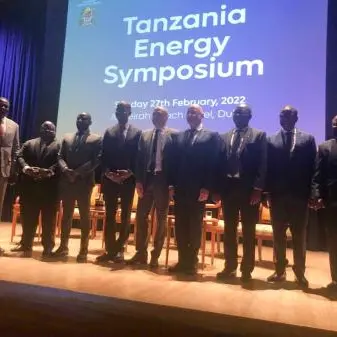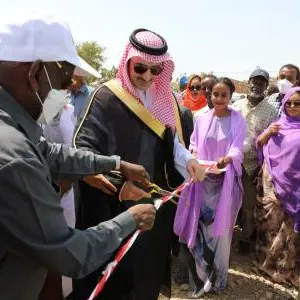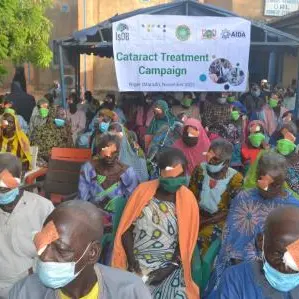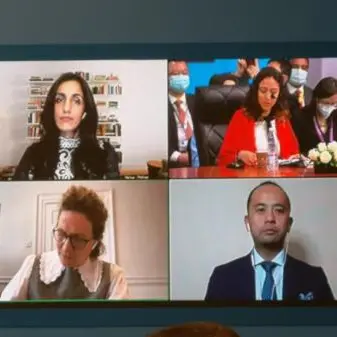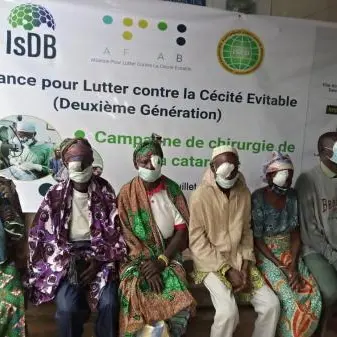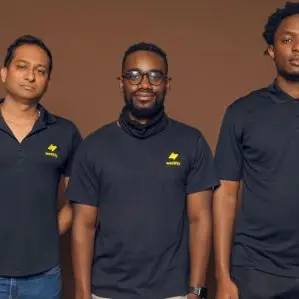In Bomet County, Kenya, Kenya Red Cross is supporting influential community figures to use traditional customs to tackle modern-day disease threats.
Some people use WhatsApp. Others prefer a phone call. But in Kipajit village, when you need to communicate with lots of people quickly in a crisis, there’s only one option: the Kigondit.
A traditional instrument made from a cow’s horn, the Kigondit has been used for generations by Kipsigis communities in Bomet County to summon people for important meetings and to warn them of imminent danger. And in Kipajit, it’s village Elder, Augustine Langat, who has the power and privilege of blowing the Kigondit to serve his community.
Through the Community Epidemic and Pandemic Preparedness Programme (CP3), Kenya Red Cross is collaborating with village Elders like Augustine, and other influential community figures, to keep people healthy and safe from diseases.
When Augustine summons his village for a gathering, Community Health Promoters—trained by Kenya Red Cross through the CP3 programme—and animal health workers arrive to share important messages about different disease threats, any active outbreaks, and the ways people can reduce their risks.
“When I blow the traditional horn, it reaches many people, especially those who might not have been reached through one-on-one interaction. I alert the people so that we can meet in a central place for us to be enlightened by the veterinary and human health practitioners,” explains Augustine.
Village Elders are highly respected and trusted figures within their communities and are looked up to for advice and wisdom. So when villagers hear the call of the Kigondit, they come.
“There are different ways of blowing the horn for different occasions – you can call them different ringtones. There’s a way to call for a general meeting, and a different noise when you want to alert the community to something dangerous,” explains Purity Kosgei, CP3 Project Officer for Bomet County.
“Augustine is able to mobilize the community very quickly, for example when a cow dies from anthrax. It is prudent to call everyone in the village to help tell them what is happening, what the preventative measure are, and how to respond,” she adds.
In the case of anthrax, a serious and potentially deadly infectious disease that can spread from animals to humans, Elders are also now leading the way in shifting cultural norms and behaviours that can put people’s lives at risk.
For example, in Augustine’s community there’s an ancient belief that when an animal dies, burying the carcass whole will bring a curse on the people and stop them from rearing more animals. It’s therefore customary to cut open the animal and remove its innards prior to burying. Yet if the animal has died from anthrax, doing so can expose people to the disease—which can kill if left untreated.
“We’ve seen real behaviour change. The Elders were the ones from the onset who were against disposal of animal carcasses as a whole. But now they understand the risks to people’s health and use their platform to encourage proper burial of animals, to encourage animal vaccination and to make sure people report suspicious animal deaths” explains Monica Okwanyi, former CP3 Project Officer for Bomet County.
“Elders are the most trusted community figures and by engaging them we enhance ownership because community members want to know ‘what are our Elders saying? Is it approved by our Elders?’. It’s important to be culturally sensitive. We engage with them respectfully so they don’t feel like we are just imposing something on them. They are happy to learn powerful knowledge they can carry forward through generations,” adds Monica.
With epidemics spreading further and faster than ever before around the world, equipping communities with the knowledge and skills to detect, alert, and respond to disease threats has never been more important.
Through the CP3 programme, we’ve seen time and time again that well-informed communities can be the first line of defence against epidemics—reducing their spread and even stopping them in their tracks.
Augustine puts it best:
“I’m excited with the work that I do because when you educate the community, you are protecting their lives. When the area chief tells me to call the people, I do it wholeheartedly because I love it when people get the correct health messages.”
“It’s good when the community is alerted. They respond so as to ultimately save lives.”
Distributed by APO Group on behalf of International Federation of Red Cross and Red Crescent Societies (IFRC).
